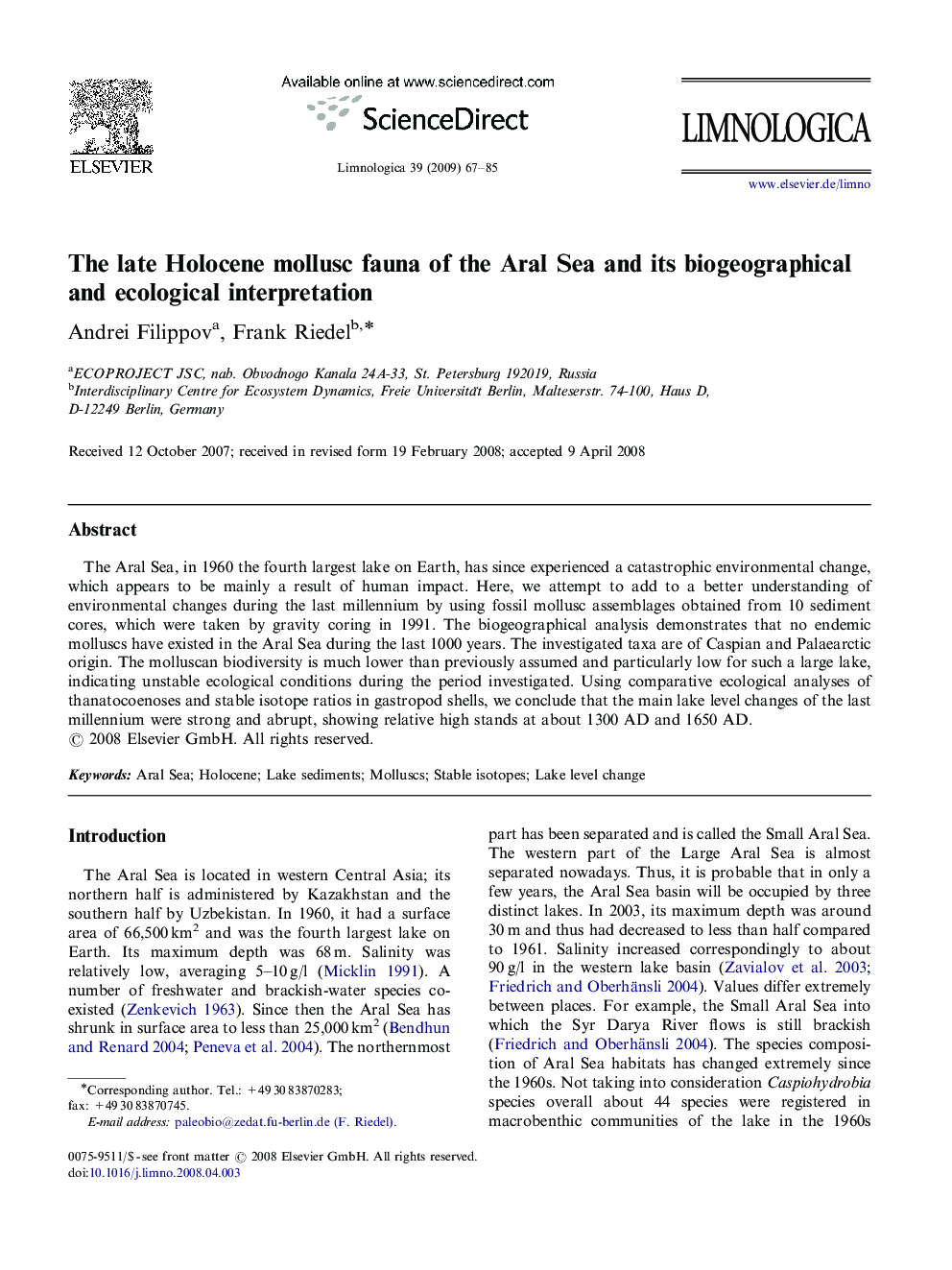| Article ID | Journal | Published Year | Pages | File Type |
|---|---|---|---|---|
| 4400705 | Limnologica - Ecology and Management of Inland Waters | 2009 | 19 Pages |
The Aral Sea, in 1960 the fourth largest lake on Earth, has since experienced a catastrophic environmental change, which appears to be mainly a result of human impact. Here, we attempt to add to a better understanding of environmental changes during the last millennium by using fossil mollusc assemblages obtained from 10 sediment cores, which were taken by gravity coring in 1991. The biogeographical analysis demonstrates that no endemic molluscs have existed in the Aral Sea during the last 1000 years. The investigated taxa are of Caspian and Palaearctic origin. The molluscan biodiversity is much lower than previously assumed and particularly low for such a large lake, indicating unstable ecological conditions during the period investigated. Using comparative ecological analyses of thanatocoenoses and stable isotope ratios in gastropod shells, we conclude that the main lake level changes of the last millennium were strong and abrupt, showing relative high stands at about 1300 AD and 1650 AD.
